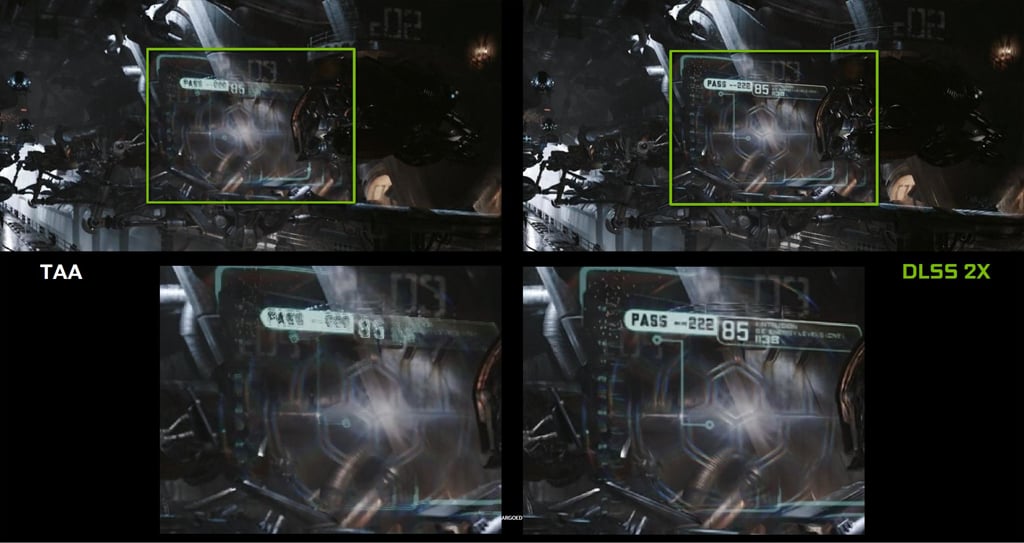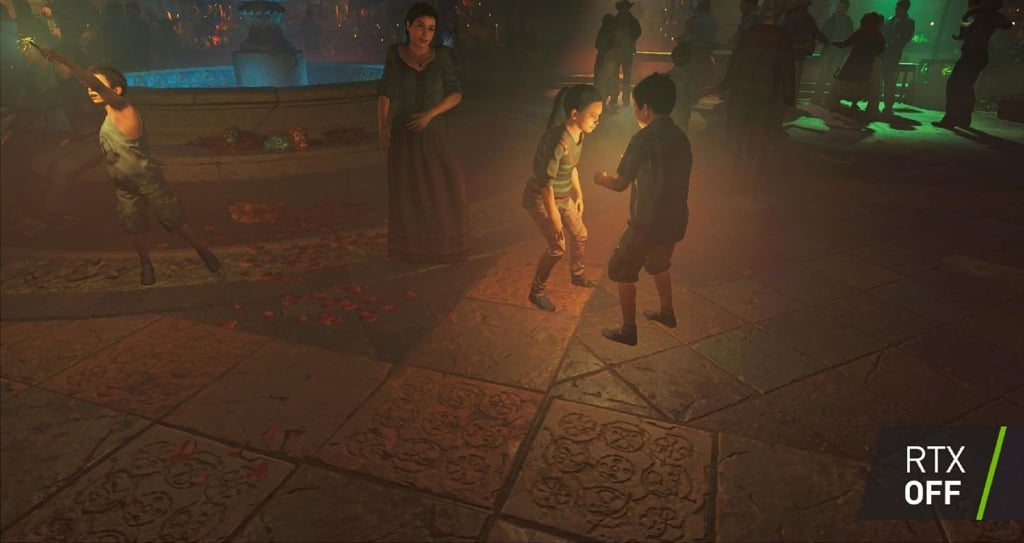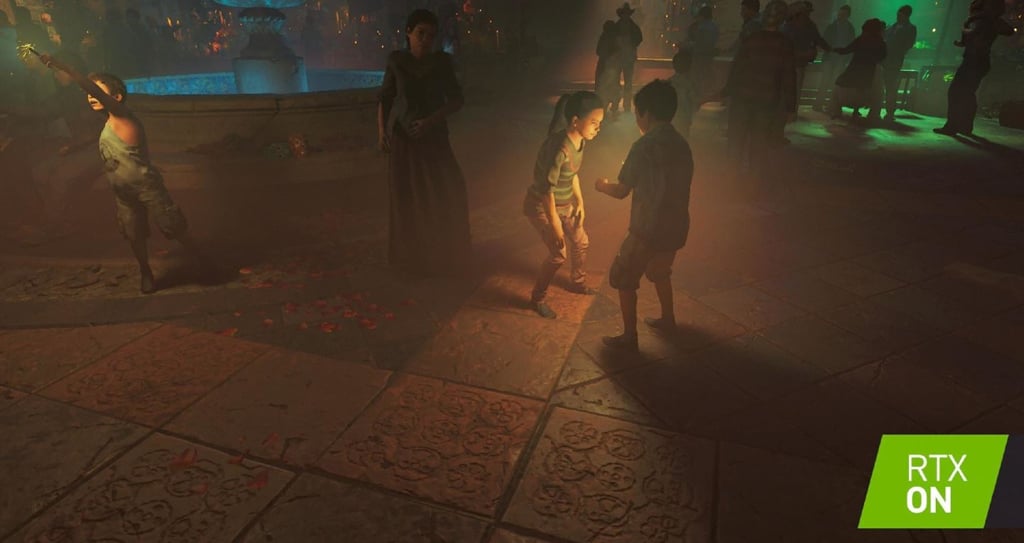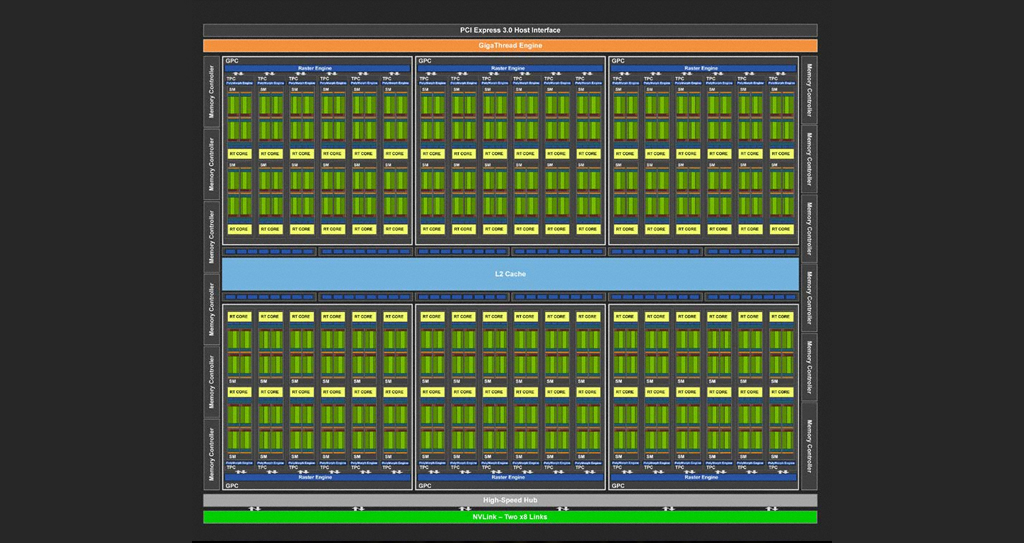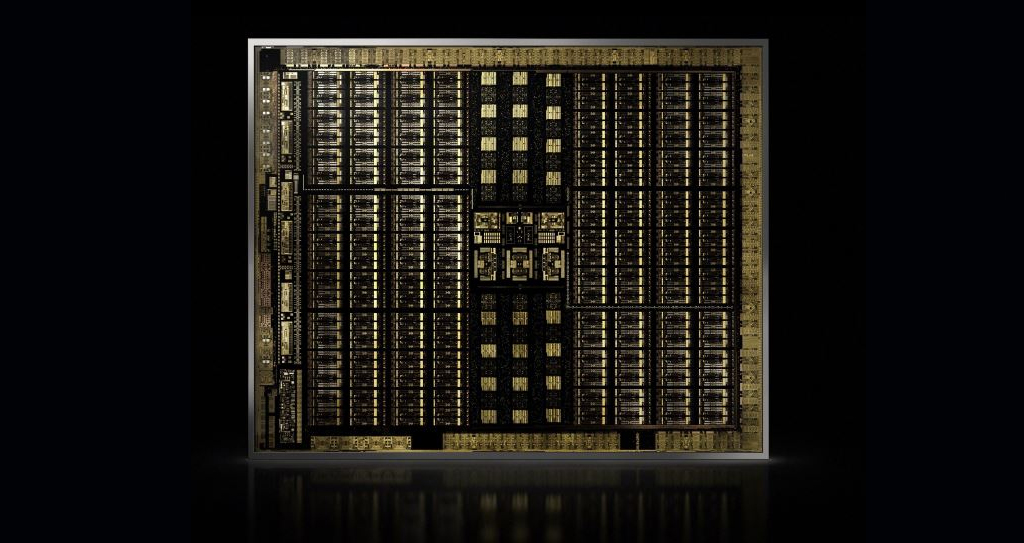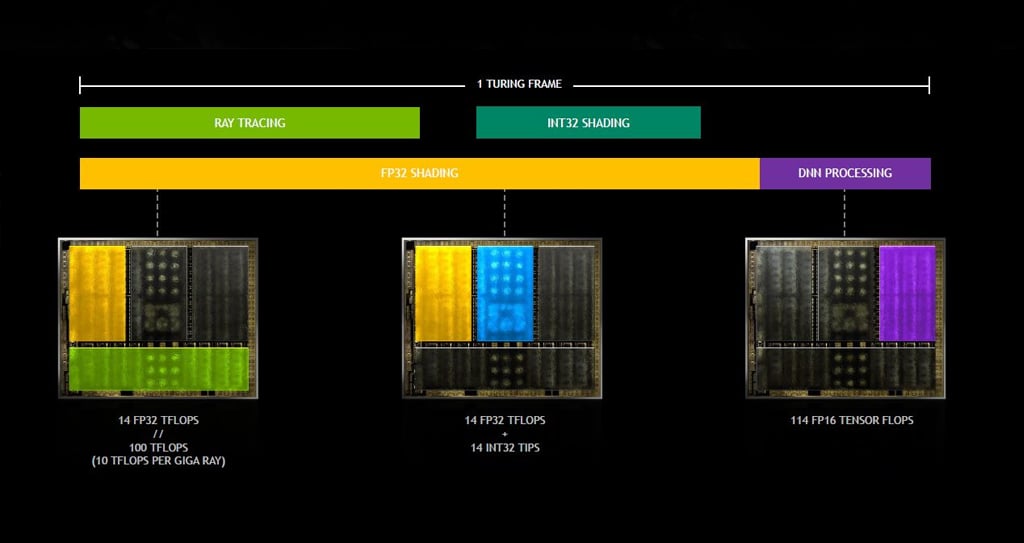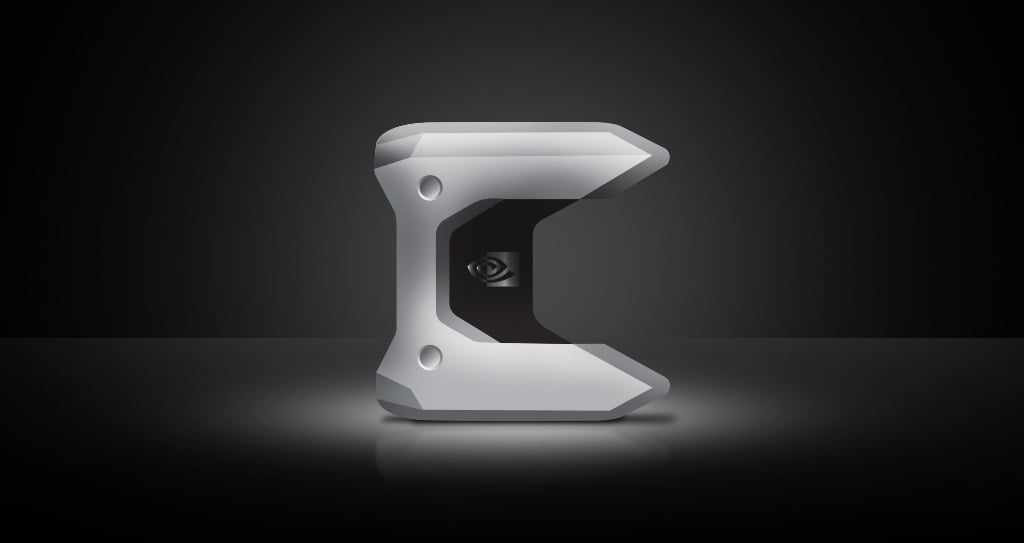SCANZONE
02.10.18 | ISSUE 59
It has been a long time coming, but NVIDIA has finally launched a new range of gaming graphics cards, the GeForce RTX 20-series. Based on a new architecture and introducing two exciting new features, DLSS and ray tracing, this month’s Scanzone has a full in-depth review including details on the new architecture and the all-important benchmark results. Read on to find out more.
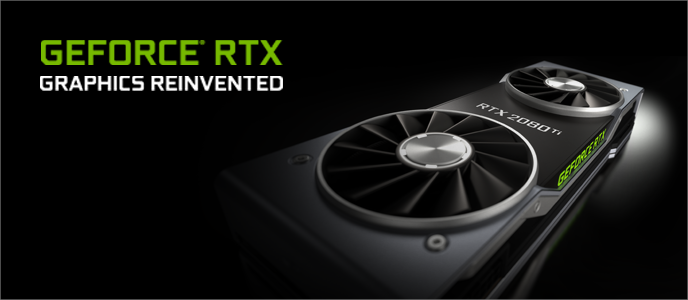
1. NVIDIA GeForce RTX 2080 Ti and 2080 review
Graphics cards launches are exciting because they are the most important component in a gaming PC, but when there’s also a new architecture it’s doubling exciting.
This is because a new GPU architecture usually means not only a big increase in performance, but also the introduction of exciting new features. For the last couple of years all of NVIDIA’s GeForce GTX 10-series gaming graphics cards have been based on the Pascal architecture, but this is now being put out to pasture by the new Turing architecture.
To differentiate them from their predecessors, the new Turing-based cards ditch the old GeForce GTX naming system in favour of GeForce RTX. The first two of these to go on-sale are the flagship 2080 Ti and high-end 2080, with a more modest 2070 planned for release on October 17th.
The table lists the key specs of each of these new GPUs alongside the previous generation GeForce 10-series GPUs along with the current typical price.
| Model | RTX 2080 | RTX 2080Ti | GTX 1080 | GTX 1080Ti |
|---|---|---|---|---|
| Architecture | Turing | Turing | Pascal | Pascal |
| GPU | TU104 | TU102 | GP104 | GP102 |
| CUDA Cores | 2,944 | 4,352 | 2,560 | 3,584 |
| Tensor Cores | 368 | 544 | N/A | N/A |
| RT Cores | 46 | 68 | N/A | N/A |
| Base Clock | 1515MHz | 1350MHz | 1,607MHz | 1,480MHz |
| Boost Clock | 1,710MHz | 1,545MHz | 1,733MHz | 1,582MHz |
| Memory | 8GB GDDR6 | 11GB GDDR6 | 8GB GDDR5X | 11GB GDDR5 |
| Memory Controller | 256-bit | 352-bit | 256-bit | 352-bit |
| TDP | 225W | 260W | 180W | 250W |
| Typical price (inc VAT) | £799 | £1099 - £1199 | £499 | £699 |
Deep Learning Super Sampling
The new Turing architecture is about more than brute rendering speed, as for the first time in a GeForce graphics card it features hardware accelerated deep learning and hardware accelerated ray tracing. Support for deep learning comes curtesy of the addition of Tensor cores, which up till now have only been found in uber expensive professional grade Tesla, Quadro and Titan GPUs. Tensor cores perform the same function in the new Turing-based Quadro RTXs, but instead of being used to train neural networks and data mining, in GeForce RTX they are employed for Deep Learning Super Sampling.
DLSS works by extracting multidimensional features of the rendered scene and intelligently combining details from multiple frames to construct a high-quality final image. This allows Turing GPUs to use half the samples for rendering, using deep learning to fill in information to create the final image. DLSS produces similar quality to a traditional rendered image that has had Temporal Anti-aliasing (TAA) post-processing applied, but at a higher frame rate.
So far, 25 games have been announced that will support DLSS, with undoubtedly more to follow soon.
Games that will support DLSS
Ark Survival Evolved
Atomic Heart
Darksiders 3
Dauntless
Deliver Us The Moon: Fortuna
Fear the Wolves
Final Fantasy XV
Fractured Lands
Hellblade: Senua's Sacrifice
Hitman 2
Islands of Nyne: Battle Royale
Justice (Ni Shui Han)
JX3
KINETIK
Mechwarrior 5: Mercenaries
Outpost Zero
Overkill's The Walking Dead
Player Unknown’s Battlegrounds
Remnant: From the Ashes
SCUM
Serious Sam 4: Planet Badass
Shadow of the Tomb Raider
Stormdivers
The Forge Arena
We Happy Few
Hardware Accelerated Ray Tracing
The other headline feature in Turing is support for hardware accelerated ray tracing.
Real time ray tracing is the holy grail of computer graphics, as it is a true simulation of how light interacts with objects, as opposed to rasterization, the traditional technique for rendering graphics in games. However, because ray tracing is so much more computationally intensive than rasterization, up until now it’s only been used in pre-rendered graphics such as films and TV.
You can see how superior a physically accurate ray traced scene looks in these two screenshots taken from an upcoming upgraded version of the game Shadow of the Tomb Raider.
Turing cards have dedicated hardware to speed up ray tracing, known as RT cores, with different models having more or less RT cores. Even with multiple RT cores however it’s still not possible to ray trace an entire scene at a smooth frame rate. Instead, Turing GPUs use a hybrid rendering model, using a combination of the CUDA cores to first rasterise the scene, followed by the RT cores adding in ray traced lighting effects, with the Tensor cores at the end doing a final pass of the new DLSS post-processing technique.
So far 10 upcoming games have announced support for ray tracing, again no doubt with more to follow. In addition to being supported by the games themselves, it will also require DirectX Ray Tracing which is expected to be rolled out in the October update for Windows 10.
Games that will support RTX Ray-Tracing
Assetto Corsa Competizione
Atomic Heart
Battlefield V
Enlisted
Mechwarrior 5: Mercenaries
Metro Exodus
Shadow of the Tomb Raider
Justice (Ni Shui Han)
JX3
The Stream Multiprocessor Reinvented
While the new DLSS and ray tracing features are undoubtedly the most exciting aspects of the Turing architecture, the underlying Stream Multiprocessors (SM) has also seen a big upgrade over the previous-generation Pascal architecture.
At a headline level, the most powerful Turing GPUs comprise 18.6 billion transistors, and deliver a 1.5 increase in performance compared to Pascal. This performance boost is enabled by two key architectural changes. First, Turing adds a new independent integer data path, which supports integer and floating point operations to run concurrently. Second, the SM memory path has been redesigned to unify shared memory, texture caching, and memory load caching into one unit. This translates to double the bandwidth and more than double an increase in capacity for the Level 1 cache for common workloads. Turing is also the first GPU architecture to support next-generation GDDR6 memory, which can run at higher speeds than GDDR5.
Other new features in Turing include a new shader model, Mesh Shading, which offloads object list processing from the CPU to the GPU. Another new feature is Variable Rate Shading (VRS), which enables games developers to apply differing levels of shading to individual or groups of pixels that aren’t critical to image quality, saving GPU horsepower and increasing the frame rate. Another new feature is Texture Space Shading, which helps to cut down on shading the same objects multiple times as the results can now be cached in memory and reused. Finally, there’s Multi-View Rendering (MVR) which enables multiple views to be rendered in a single pass such as when gaming in VR.
The last thing to cover in Turing before diving into the test results is SLI, which is sticking around, but instead of using a dedicated SLI bridge now uses the much higher bandwidth NVLink bus first designed for deep learning Tesla and Quadro cards.
GeForce RTX Benchmarks
We put the two new GeForce RTX cards through their paces in one of our 3XS Vengeance gaming PCs, comprising a Core i7 8086K CPU, Asus RoG STRIX Z370-F Gaming motherboard and 16GB Corsair Vengeance DDR4 3000MHz. To see how the new cards stack up we also ran the same tests on the previous generation GeForce GTX 1080 and 1080 Ti.
As we were only testing high-end graphics cards all the benchmarks were run at the highest quality settings with all the eye candy and post-processing turned on. All the cards were tested with the special press driver 411.51 driver using a fresh install of Windows 10 Home.

The first game we ran on all the cards was Battlefield 1, a great looking game with all the eye candy turned on. All four cards managed a smooth frame rate at 4K, however there wasn’t a huge speed up when we switched out the GTX 1080 Ti in favour of the RTX 2080. At extra 4-5fps is welcome, but clearly if you already have a GTX 1080 Ti then an RTX 2080 isn’t a worthwhile upgrade if you mostly play Battlefield 1. The RTX 2080 Ti on the other hand is a monster, averaging over 100fps, showing a clear performance lead over the other cards, with a minimum frame rate a staggering 52% faster than the GTX 1080 Ti.

Shadow of the Tomb Raider was released just a few days before the GeForce RTX 20-series launch so we were keen to try out this cutting-edge game. Just like Battlefield 1, there was only a very small performance difference between the GTX 1080 Ti and RTX 2080. Once again the RTX 2080 Ti took a clear performance lead over the other cards, proving an impressive 34% faster than the GTX 1080 Ti. What will be interesting to see is when DLSS and ray tracing get added to Shadow of the Tomb Raider as we suspect this will extend the performance difference between the RTX and GTX cards significantly.

The Witcher 3 is the oldest game we benchmarked, but is still very popular. The GTX 1080 struggled at 4K in this game, with the GTX 1080 Ti and RTX 2080 giving almost identical frame rates, just 2-3fps apart. The RTX 2080 Ti managed poll position again, but was only 22% faster than the GTX 1080 Ti, the smallest performance difference we saw in any game from the new cards.

We also managed to get hold of an early copy of an updated Final Fantasy XV benchmark, which adds in support for DLSS post-processing. The main point to take away from this benchmark is that DLSS is much more efficient than TAA on an RTX card, for instance on the RTX 2080 we saw a 39% performance speed up switching from TAA to DLSS, enough of a boost to make it faster than an RTX 2080 Ti running with TAA. Put another way, the RTX 2080 running with DLSS was 35% faster than the GTX 1080 Ti with TAA, indicating that once more game developers start to support DLSS the performance difference between GTX and RTX cards will grow wider still.
It’s worth noting though that TAA and DLSS are different techniques, so the end result doesn’t look exactly the same. For instance, in some scenes the TAA did a better job of smoothing out jaggies than DLSS and vice versa. Even so, DLSS looks is a welcome improvement in Turing as it enables extra performance while still getting better image quality than a game rendered without any post-processing.

We also ran the synthetic benchmark 3DMark Timespy. Being synthetic, this doesn’t really tell you how fast a graphics card will run your favourite games, but its gives a decent indication of relative performance. In this test the RTX 2080 proved 10% faster than the GTX 1080 Ti, and the RTX 2080 Ti 38% faster, a similar performance step up as we saw in the three games we also tested the cards with.

At the last minute, we also got hold of Reflections, a tech demo which supports the new RT cores in Turing to hardware accelerate ray tracing. The demo is so demanding that we could only reliably run it at 2560 x 1440, but even at this comparatively low resolution, Reflections looked simply stunning compared to any rasterized graphics, with truly realistic looking reflections and shadows.
The performance difference was pretty jaw dropping too. With no hardware support, both GTX 10-series GPUs really struggled, and with a jerktastic minimum frame rate of 5-6fps, if this was a real game it would have been simply unplayable. In contrast, the RTX 2080 rendered the demo at 36fps, a 500% increase, and the RTX 2080 Ti at 46fps, 666% faster. It’s important to remember that Reflections is a tech demo, not a game, but it does use the Unreal engine so does give a tantalising sneak peek of the ray tracing potential of the new RTX cards.

The final metric for the new cards was power consumption, which we measured at the wall in Watts when the system was running 3DMark Timespy. With the exception of the GTX 1080, all the cards consumed a broadly similar amount of power, so you shouldn’t need to upgrade your PSU if you already have a high-end graphics card. However, it is worth noting that all the RTX cards we tested ran extremely hot, so it’s really important to have a good airflow flowing through your PC case.
Conclusion
After stretching and extending the range of graphics cards based on the Pascal architecture for over two years, NVIDIA has finally released the first gaming graphics cards based on a new architecture, Turing.
Turing is much more than Pascal on steroids though, although it does have more brute rendering power, it’s also smarter, introducing a new AI-powered post-processing technique called DLSS and hardware-accelerated ray tracing.
We benchmarked the first two models, the flagship RTX 2080 Ti and high-end RTX 2080 against the two fastest GeForce 10-series cards, the GTX 1080 Ti and GTX 1080. At first glance the RTX 2080 doesn’t seem all that impressive as in the games we benchmarked it was less than 10 per cent faster than the GTX 1080 Ti. And with a RTX 2080 retailing for the same £799 that the GTX 1080 did at launch it doesn’t look great for the new card. However, it’s worth pointing out that this small performance difference will significantly grow as games that support DLSS start to come out.
The Final Fantasy VX benchmark gives a great indication of what’s to come, with the RTX 2080 gaining an extra 35% performance over the GTX 1080 Ti when DLSS was enabled. Meanwhile, without hardware acceleration there’s no point in enabling ray tracing on a GTX 1080 Ti, as it only managed a horrendous 5fps in the Reflections demo, well short of the 24fps considered the bare minimum for a playable frame rate. In contrast, the GeForce RTX 2080 managed to render the eye-popping demo at 36fps.
And while the £1099 to £1199 price of the GeForce RTX 2080 Ti is undoubtedly steep, it’s got far more horsepower than any graphics card in existence, delivering smooth frames at 4K even with all the eye candy turned on. Throw DLSS and ray tracing into the mix over the coming months and it’s clear that the RTX 2080 Ti is a true monster of a graphics card, well positioned to take advantage of the new wave of games coming in 2019.
Scan sells a massive range of GeForce RTX 2080 Ti and 2080 cards from a huge variety of board manufacturers, including big names such as EVGA and Asus. We’ve also got waterblocks for the new cards from EK, plus air and watercooled PCs featuring the new cards built by our award-winning 3XS Systems team.

2. Scan wins big at the PC Pro awards
PC Pro, the biggest computer magazine in the UK, has just announced the winners for its 2018 Awards. Scan picked up two awards, one of which, Best Online Retailer is voted by members of the public, so thank you to everyone who voted for Scan. This is the fourth year in a row Scan has won this award so we are proud to have all the hard work we put in providing a great service recognised.
In addition, our 3XS Systems Pro Graphics division was also awarded the Workstation of the Year award for the third year in a row. Visit our website to find out more about our award-winning Pro Graphics workstations.
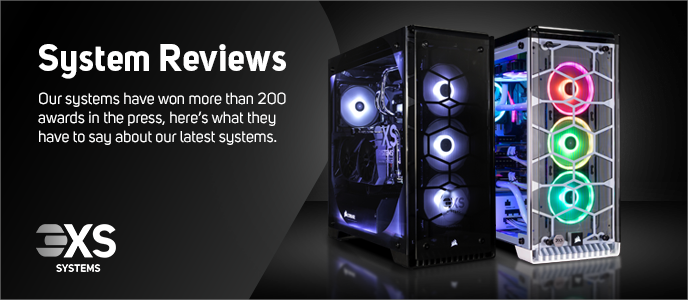
"A stellar all-rounder"
Check our HEXUS for the first review of an RTX gaming PC, the 3XS Vengeance RTX. Combining the new GeForce RTX 2080 card with an overclocked Core i7 8086K CPU and all the trimmings, according to the review ‘for performance aficionados, the Scan 3XS Vengeance RTX is a stellar all-rounder.
The entire build is well specified, integration is neat and tidy throughout, both the CPU and GPU are factory overclocked, noise levels are comfortable, and the whole package is backed by a three-year warranty from a well-known UK retailer.’
You can read check out the 3XS Vengeance RTX in more detail on our website.
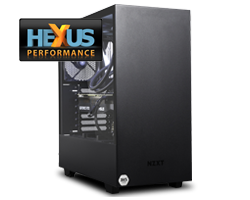
"A truly formidable workstation"
The December issue of PC Pro contains yet more good news for Scan, featuring a review of our first ever Pro Graphics workstation with an AMD CPU.
The 3XS WA6000 Viz features the AMD Ryzen Threadripper 2990WX CPU with 32 cores and 64 threads so is ideal for CPU-intensive applications such as rendering and simulations. According to the review ‘The WA6000 Viz achieved some terrific results in our performance results. In the Cinebench R15 CPU rendering benchmark it thrashed its Intel counterpart. The WA6000 Viz showcases the remarkable potential of AMD's new flagship CPU. If what you chiefly demand from a workstation is the ability to chew through huge number crunching tasks, there's simply no competition.’
The review concluded that it’s ‘A truly formidable workstation’, handing out a Recommended Award. You can check out the award-winning 3XS WA6000 Viz in more detail on the 3XS website.

